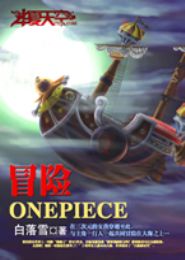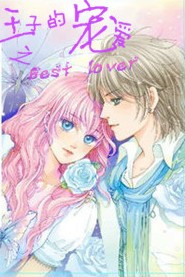stories to tell to children-第2部分
按键盘上方向键 ← 或 → 可快速上下翻页,按键盘上的 Enter 键可回到本书目录页,按键盘上方向键 ↑ 可回到本页顶部!
————未阅读完?加入书签已便下次继续阅读!
you make a story your own and tell it; the listener
gets the story; PLUS YOUR APPRECIATION
OF IT。 It comes to him filtered through your
own enjoyment。 That is what makes the funny
story thrice funnier on the lips of a jolly
raconteur than in the pages of a memoir。 It is
the filter of personality。 Everybody has something
of the curiosity of the primitive man
concerning his neighbour; what another has in
his own person felt and done has an especial
hold on each one of us。 The most cultured of
audiences will listen to the personal reminiscences
of an explorer with a different tingle
of interest from that which it feels for a
scientific lecture on the results of the exploration。
The longing for the personal in experience is
a very human longing。 And this instinct or
longing is especially strong in children。 It
finds expression in their delight in tales of what
father or mother did when they were little; of
what happened to grandmother when she went
on a journey; and so on; but it also extends to
stories which are not in themselves personal:
which take their personal savour merely from
the fact that they flow from the lips in
spontaneous; homely phrases; with an appreciative
gusto which suggests participation。
The greater ease in holding the attention of
children is; for teachers; a sufficient practical
reason for telling stories rather than reading
them。 It is incomparably easier to make the
necessary exertion of 〃magnetism;〃 or whatever
it may be called; when nothing else distracts
the attention。 One's eyes meet the
children's gaze naturally and constantly; one's
expression responds to and initiates theirs without
effort; the connection is immediate。 For
the ease of the teacher; then; no less than for
the joy of the children; may the art of story…
telling be urged as pre…eminent over the art of
reading。
It is a very old; a very beautiful art。 Merely
to think of it carries one's imaginary vision
to scenes of glorious and touching antiquity。
The tellers of the stories of which Homer's
Iliad was compounded; the transmitters of
the legend and history which make up the
Gesta Romanorum; the travelling raconteurs
whose brief heroic tales are woven into our
own national epic; the grannies of age…old
tradition whose stories are parts of Celtic folk…lore;
of Germanic myth; of Asiatio wonder…tales;
these are but younger brothers and sisters
to the generations of story…tellers whose
inventions are but vaguely outlined in resultant
forms of ancient literatures; and the names of
whose tribes are no longer even guessed。
There was a time when story…telling was the
chiefest of the arts of entertainment; kings
and warriors could ask for nothing better;
serfs and children were satisfied with nothing
less。 In all times there have been occasional
revivals of this pastime; and in no time has the
art died out in the simple human realms of which
mothers are queens。 But perhaps never; since
the really old days; has story…telling so nearly
reached a recognised level of dignity as a legitimate
and general art of entertainment as now。
Its present popularity seems in a way to be
an outgrowth of the recognition of its educational
value which was given impetus by the
German pedagogues of Froebel's school。 That
recognition has; at all events; been a noticeable
factor in educational conferences of late。
The function of the story is no longer
considered solely in the light of its place in the
kindergarten; it is being sought in the first;
the second; and indeed in every standard where
the children are still children。 Sometimes the
demand for stories is made solely in the
interests of literary culture; sometimes in far
ampler and vaguer relations; ranging from
inculcation of scientific fact to admonition of
moral theory; but whatever the reason given;
the conclusion is the same: tell the children
stories。
The average teacher has yielded to the
pressure; at least in theory。 Cheerfully; as she
has already accepted so many modifications of
old methods by 〃new thought;〃 she accepts
the idea of instilling mental and moral desiderata
into the receptive pupil; via the charming
tale。 But; confronted with the concrete
problem of what desideratum by which tale;
and how; the average teacher sometimes finds
her cheerfulness displaced by a sense of inadequacy
to the situation。
People who have always told stories to
children; who do not know when they began
or how they do it; whose heads are stocked
with the accretions of years of fairyland…
dwelling and nonsense…sharing;these cannot
understand the perplexity of one to whom
the gift and the opportunity have not 〃come
natural。〃 But there are many who can understand
it; personally and all too well。 To these;
the teachers who have not a knack for story…
telling; who feel as shy as their own youngest
scholar at the thought of it; who do not know
where the good stories are; or which ones are
easy to tell; it is my earnest hope that the
following pages will bring something definite
and practical in the way of suggestion and
reference。
HOW TO TELL STORIES TO CHILDREN
CHAPTER I
THE PURPOSE OF STORY…TELLING IN SCHOOL
Let us first consider together the primary
matter of the AIM in educational story…telling。
On our conception of this must depend very
largely all decisions as to choice and method;
and nothing in the whole field of discussion
is more vital than a just and sensible notion
of this first point。 What shall we attempt
to accomplish by stories in the schoolroom?
What can we reasonably expect to accomplish?
And what; of this; is best accomplished by this
means and no other?
These are questions which become the more
interesting and practical because the recent
access of enthusiasm for stories in education
has led many people to claim very wide and
very vaguely outlined territory for their
possession; and often to lay heaviest stress on
their least essential functions。 The most
important instance of this is the fervour with
which many compilers of stories for school
have directed their efforts solely toward
the ration of natural phenomena。 Geology;
zoology; botany; and even physics are taught
by means of more or less happily constructed
narratives based on the simpler facts of these
sciences。 Kindergarten teachers are familiar
with such narratives: the little stories of
chrysalis…breaking; flower…growth; and the like。
Now this is a perfectly proper and practicable
aim; but it is not a primary one。 Others; to
which at best this is but secondary; should
have first place and receive greatest attention。
What is a story; essentially? Is it a textbook
of science; an appendix to the geography;
an introduction to the primer of history? Of
course it is not。 A story is essentially and
primarily a work of art; and its chief function
must be sought in the line of the uses of art。
Just as the drama is capable of secondary uses;
yet fails abjectly to realise its purpose when
those are substituted for its real significance
as a work of art; so does the story lend itself
to subsidiary purposes; but claims first and
most strongly to be recognised in its real
significance as a work of art。 Since the drama
deals with life in all its parts; it can exemplify
sociological theory; it can illustrate economic
principle; it can even picture politics; but the
drama which does these things only; has no
breath of its real life in its being; and dies
when the wind of popular tendency veers from
its direction。 So; you can teach a child
interesting facts about bees and butterflies by telling
him certain stories; and you can open his eyes
to colours and processes in nature by telling
certain others; but unless you do something
more than that and before that; you are as
one who should use the Venus of Milo for a
demonstration in anatomy。
The message of the story is the message of
beauty; as effective as that message in marble
or paint。 Its part in the economy of life is TO
GIVE JOY。 And the purpose and working of the
joy is found in that quickening of the spirit
which answers every perception of the truly
beautiful in the arts of man。 To give joy; in
and through the joy to stir and feed the life
of the spirit: is not this the legitimate function
of the story in education?
Because I believe it to be such; not because
I ignore the value of other uses; I venture to
push aside all aims which seem secondary to
this for later mention under specific heads。
Here in the beginning of our consideration I
wish to emphasise this element alone。 A story
is a work of art。 Its greatest use to the child
is in the everlasting appeal of beauty by which
the soul of man is constantly pricked to new
hungers; quickened to new perceptions and so
given desire to grow。
The obvious practical bearing of this is that
story…telling is first of all an art of entertainment;
like the stage; its immediate purpose is
the pleasure of the hearer;his pleasure; not
his instruction; first。
Now the story…teller who has given the
listening children such pleasure as I mean may
or may not have added a fact to the content of
their minds; she has inevitably added something
to the vital powers of their souls。 She
has given a wholesome exercise to the emotional
muscles of the spirit; has opened up new
windows to the imagination; and added some
line or colour to the ideal of life and art which
is always taking form in the heart of a child。
She has; in short; accomplished the one greatest
aim of story…telling;to enlarge and enrich the
child's spiritual experience; and stimulate healthy
reaction upon it。
Of course this result cannot be seen and
proved as easily and early as can the ap
![[网王同人]colorless wind封面](http://www.baxi2.com/cover/noimg.jpg)



